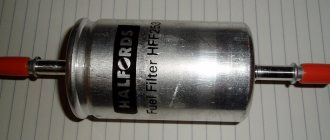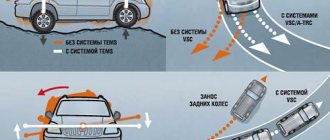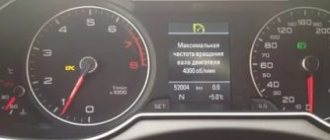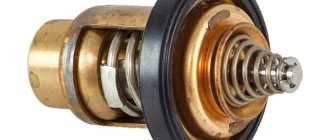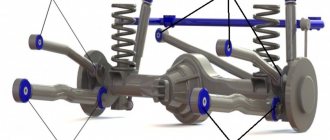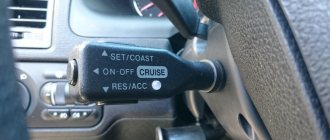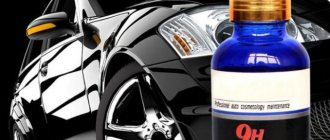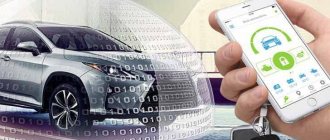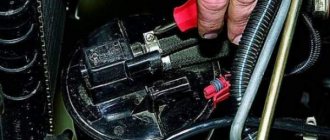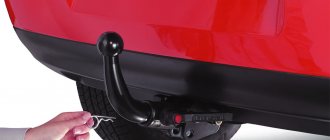Active safety systems in a car today have become the most important part of a car's equipment. When purchasing a vehicle, the potential owner immediately examines the comfort and safety zone of the equipment in order to make a choice in favor of a more reliable car. One of the active safety systems - ESP - is an essential addition to a modern car, which helps improve directional stability.
The exchange rate stability system can only work fully with ABS, and preferably also EBD. The directional stability control controls virtually all of the car's functions, so that if a critical skidding situation arises, this module allows you to avoid an uncontrolled ride of the car.
Why do you need ESP in a car?
ESP - what is it?
These can be considered any cases of loss of contact between the wheels and the road (skidding on snow, wet asphalt or on an icy surface). That is, in the event of a skid that occurs for various reasons, the electronics help us level the car while moving.
The developers of the ESP were the German companies Bosch and Daimler. In 1995, the first stabilization system was equipped with the Mercedes S-Class. Now ESP is installed on most cars produced in Europe and America. There are also analogues of this system:
These are the same dynamic stabilization systems, just developed by a specific automaker. Additional functions may vary (we'll talk about them later), but the principle of operation is the same.
Advantages and disadvantages of ESP
The electronic vehicle stabilization system was invented with the sole purpose of increasing driving safety, regardless of the driver’s level of training. As mentioned above, she is always on the alert and at any moment ready to correct the driver’s actions in the right direction.
The main advantage of this technology is that the speed of response of electronics to changes in driving conditions is much higher than that of any person. Sensors detect skidding at the initial stage, and the distributed brakes take a split second to respond. An additional bonus is increased driving comfort when driving long distances, when driver fatigue plays a big role.
The disadvantages of the car stabilization system while driving look like this:
- At the moment, the stability controller is not able to “pull” a front-wheel drive car out of a skid by increasing torque on the front wheels. This is a very effective technique practiced by experienced drivers.
- The same applies to SUVs and passenger cars equipped with 4-wheel drive. In certain conditions (eg icy conditions), judicious application of the accelerator pedal may provide better results than braking and reducing power to the drive axle.
- ESP does not behave very confidently in specific conditions - when driving on loose snow or on a slippery dirt road.
- Many manufacturers warn in the vehicle operating instructions that the stabilization electronics will not operate correctly if the car is equipped with tires of a different size or the cylinders are not properly inflated.
For the vast majority of motorists (especially beginners), the stability control system is very useful. But ESP causes inconvenience to some categories of drivers, for example, fans of “kneading mud” outside the asphalt or simply experienced car enthusiasts who are accustomed to driving without computer intervention. In this case, car manufacturers provide disabling the system with a special button or a separate mode activated by the automatic transmission selector.
The vehicle's exchange rate stabilization system in motion has a 20-year history of development, during which it received universal recognition, and is currently used on almost all models of modern cars. It is designed to automatically adjust the vehicle's directional position in skidding conditions.
ESP stabilizes the car's position in skidding conditions
Each automobile manufacturer called the stability control system differently on their models. Therefore, it has many different abbreviated names that can mislead inexperienced motorists. The first automatic exchange rate stabilization systems for German Mercedes Benz and BMW cars were called Elektronisches Stabilitatsprogramm.
ESP device
ESP is a high-level security system that interacts with a number of others:
The anti-skid system combines a control unit, sensors, and a hydraulic unit. The latter is the actuator. The operation of the system largely depends on the input sensors:
Sensors record each parameter and transmit information to the ESP control unit. Information arrives at intervals of 20 milliseconds.
Essentially, ESP is an improved version of the anti-lock braking system. But unlike ABS, it makes every possible effort to level the car - it brakes the wheel, slows down the engine, locks the gearbox, and also helps the driver steer in the correct trajectory.
How it works?
Let's look at the operating principle of ESP. The system is designed to compare vehicle movement parameters and driver actions. If the programmed parameters differ from the actual ones, the ESP unit determines the situation as uncontrollable. Next, the electronics takes all possible measures to level the car:
For example, if the front wheels of a car skid, ESP brakes the rear wheels and changes the torque of the internal combustion engine (as if the car has lost gas). So, the car smoothly returns to its trajectory. To prevent the skid from happening again at the moment of leveling, the ESP system in the car
doses braking - changes the force and compression interval of the brake discs.
This feature has saved the lives of many drivers who find themselves in stressful situations.
How does the torque change? The engine ECU receives a change signal:
That is, everything possible is done to “calm down” the engine - the supply of fuel, air and even sparks in the combustion chamber is stopped.
By the way, on some cars the electronics even block gear shifting at this moment (if we are talking about an automatic transmission).
Stability control system through the eyes of experts
The main goal of this system is to prevent the car from slipping into a skid and lateral sliding by changing the transmitted torque to one of the wheels of the drive pair. At the same time, further development of the skid that has begun is prevented and the position of the car on the trajectory of movement is stabilized during the maneuver on a slippery road. In some technical sources, it is called an anti-skid system, because such ESP in a car eliminates skidding and thereby ensures stability of course holding.
This picture clearly illustrates the operation of the ESP system, which keeps the car in a sharp turn.
The effectiveness of using automatic exchange rate stabilization equipment is confirmed by scientific research conducted by experts from the American Institute IIHS. Based on the results of the studies, it was revealed that the use of ESP in cars involved in a traffic accident reduced the mortality rate of accidents from 43 to 56%. Fatal vehicle rollover incidents have decreased by 77-80%. A vehicle equipped with ESC is significantly less likely to roll over than a vehicle not equipped with it.
Data from German insurance companies indicate that 35-40% of all fatal accidents could have been prevented or had a more favorable outcome if a stability control system had been installed on the cars of their participants. According to experts, this equipment definitely helps the motorist in extreme situations. In many cases, it is a lifesaver for inexperienced car enthusiasts.
Terms of use
Automakers have made sure that the driver does not have to constantly turn on the stabilization system. On all cars it is activated automatically after starting the engine. The stability control system intervenes as soon as there are preconditions for skidding, even at a speed of 5 km/h. But it is worth remembering that it only helps to level the car, and there is no guarantee that next time you will successfully maintain control of the car. All responsibility rests with the driver. Try to avoid sudden maneuvers on wet or snowy roads.
How does the Electronic Stability Program (ESP) work in a car?
The ability to prevent a skid and keep a car sliding sideways on the road has always been considered a sign of driver skill. To master this skill, an ordinary car enthusiast needs to drive hundreds of kilometers. Thanks to the introduction of a new exchange rate stability system (the common name is the abbreviation ESP), many cars “know how” to get out of such situations on their own. To understand how the function works in practice, you need to understand the general design and operating principle of ESP.
How does the system work?
This abbreviation stands for Electronic Stability Program, which translated into Russian means “electronic stabilization system.” It should be noted that this function is not available for budget cars, but is installed optionally in cars of the mid-price category. Only expensive cars are equipped with ESP as standard, and later you will understand why.
The main element of the circuit is a separate electronic control unit (also known as a controller, ECU), which interacts with the following sensors:
- front wheel rotation meter;
- the same for the rear wheels;
- steering wheel position detector;
- dynamic lateral load sensor (another common name is G-sensor, angular acceleration meter).
Anyone who has ever understood the principle of operation of the anti-lock braking system (ABS) will probably see familiar parts in the list above - wheel rotation meters that transmit information to the ABS controller.
The ESP electronic unit also controls the hydraulic cylinder valves of the front and rear brakes, plus it is connected to the main “brains” of the car, which controls the supply of fuel to the engine cylinders. In a car with a similar set of electronics, a separate controller for the anti-lock braking system is simply not needed, since ABS is part of the ESP and receives commands from the main ECU.
To maintain directional stability of a passenger car, ESP must interact with other electronic driver “assistants”:
- system that prevents slipping of the drive wheels (ASR);
- automatic differential locking devices (EDS);
- a system that distributes braking forces depending on driving conditions (EBD).
Reference. In premium cars, ESP is closely linked with another “assistant” - adaptive cruise control, which can completely control the car’s movement on the highway and in urban conditions.
It is not difficult to guess that in budget cars the above-mentioned electronic “stuffing” is absent, but in cars of the mid-price category, manufacturers install anti-lock wheels and a couple of other systems (depending on the brand and equipment of the vehicle). This is why ESP is not available for every new car.
Operating principle of electronic stabilization
While the car is moving, the exchange rate stability system operates constantly, regardless of the mode - during acceleration, braking and driving at a constant speed. By collecting data from a group of sensors and other assisting systems, the controller compares the resulting picture with a reference one stored in its own memory. Having detected deviations that threaten the safety of the car and passengers, the electronic unit intervenes in the control and tries to correct the situation.
Why is ESP not completely disabled?
On some cars, manufacturers do not provide complete disabling of ESP. For example, in a Mercedes you need to go into the on-board computer menu to do this. And even after disabling the ESP, some of its functions will remain. And at speeds above 50 km/h, the dynamic stabilization system is forced to work fully. Alas, there is nothing to be done about it.
On some Korean cars, ESP is turned off in 2 stages. The first press of the button distinguishes only the ABS system. But to turn off the ESP completely, you need to press and hold the button for 3 seconds. The system will be disabled until the machine reaches a higher speed or until the engine is started.
Why does the ESP light come on?
The ESP lamp should not be on while the car is moving. The only exception is the moment of skidding. At this time, the lamp lights intermittently. This means that the ESP is trying to straighten the car out of an uncontrolled skid.
If the light is constantly on and the car is driving normally, diagnostics is needed. Moreover, it will be difficult to determine the malfunction: the only mechanical element of ESP is the valve body (and it is the last thing to break). Everything else consists of dozens of sensors and hundreds of wires.
Of course, you can ring each of the sensors and wires. But it’s much faster to connect a diagnostic scanner and read the existing errors. The ECU itself will show which element is not receiving a signal. After replacing the faulty sensor or re-soldering the wires, the fault goes away.
How to check the system as a whole?
To independently check whether the ESP is working, you need to spin the wheels. This can be done on snow or wet asphalt by abruptly moving the car from 1st gear. You will feel the engine speed decreasing. At the same time, the ESP lamp on the panel will blink. As soon as the car finds a hook, everything will return to its original place.
But it is better to check the operation of the system using a brake tester and advising equipment. This way you can check whether all signals are sent from the sensors to the control unit and whether the braking forces are distributed correctly to the hydraulic unit. This method makes it possible to see those faults that are invisible visually. In case of the slightest problem, an error code will be visible on the equipment.
Is it possible to install the ESP system on a car with ABS?
Having a used foreign car in an entry-level or mid-spec configuration, there is always a temptation to install something from the “maximum” range. Spare parts are often in stock, and the price is reasonable. Often the manufacturer will even leave the factory plugs and mounting holes for bolt-on installation. But alas, this does not apply to the ESP system. Even if you have an ABS system in the “base”, you won’t be able to simply buy a valve body and sensors. The main problem is in the firmware of the control units. Often the ABS firmware versions do not match, which is why ESP does not work. Sometimes even the components of the brake system differ. Therefore, even if you manage to install ESP, it will be difficult to make it work correctly
Operating such a car is not only uncomfortable (as some functions and power are lost), but also dangerous - you can lose control at any moment.
But as we have seen, the CAP is not always beneficial. When operating a car in winter or on rough terrain, sometimes you have to turn it off. In other cases, it should work constantly. But remember that ESP is only an auxiliary system. No matter what options it is endowed with, the final maneuver remains with the driver. Drive safely and be careful on the road!
Source
Pressed the ESP button. What actually went off?
According to surveys, two thirds of drivers never turn off the ESP system. The reason often lies in ignorance of what exactly the corresponding button disables. “Behind the Wheel” explains in what situation it is simply necessary to press the “ESP OFF” button.
Basic set
At first, the ABS system appeared on cars, which allowed the car to brake with maximum efficiency. At the same time, the wheels were not “tightly” blocked. The electronics allowed them to rotate with slippage of no more than a few percent. This made it possible to maintain controllability and directional stability of the car when braking. Next, the designers added traction control and electronic stabilization systems. From January 1, 2021, the Technical Regulations of the Customs Union do not allow a car without an ABS system to be certified for sales in Russia.
The traction control system on different cars is called differently: TCS, ASR, A-TRAC, ETS, etc., but the essence is always the same - to prevent the car from slipping. However, in certain conditions you simply cannot do without slipping.
For example, in order to get out of deep snow in winter or sand in summer, it is necessary that the car can turn the wheels quite intensively. And with the traction control system turned on, sometimes cars, especially rear-wheel drive ones, get stuck even in shallow snow.
The driver sees a blinking traction limit indicator on the dashboard, while the drive wheels turn in short bursts of a quarter turn every half a second. You definitely can’t overcome a snowdrift this way.
The traction control system works in conjunction with the Electronic Stability Program (ESP), a system that has broader powers and intervenes more intensively in the driving process.
